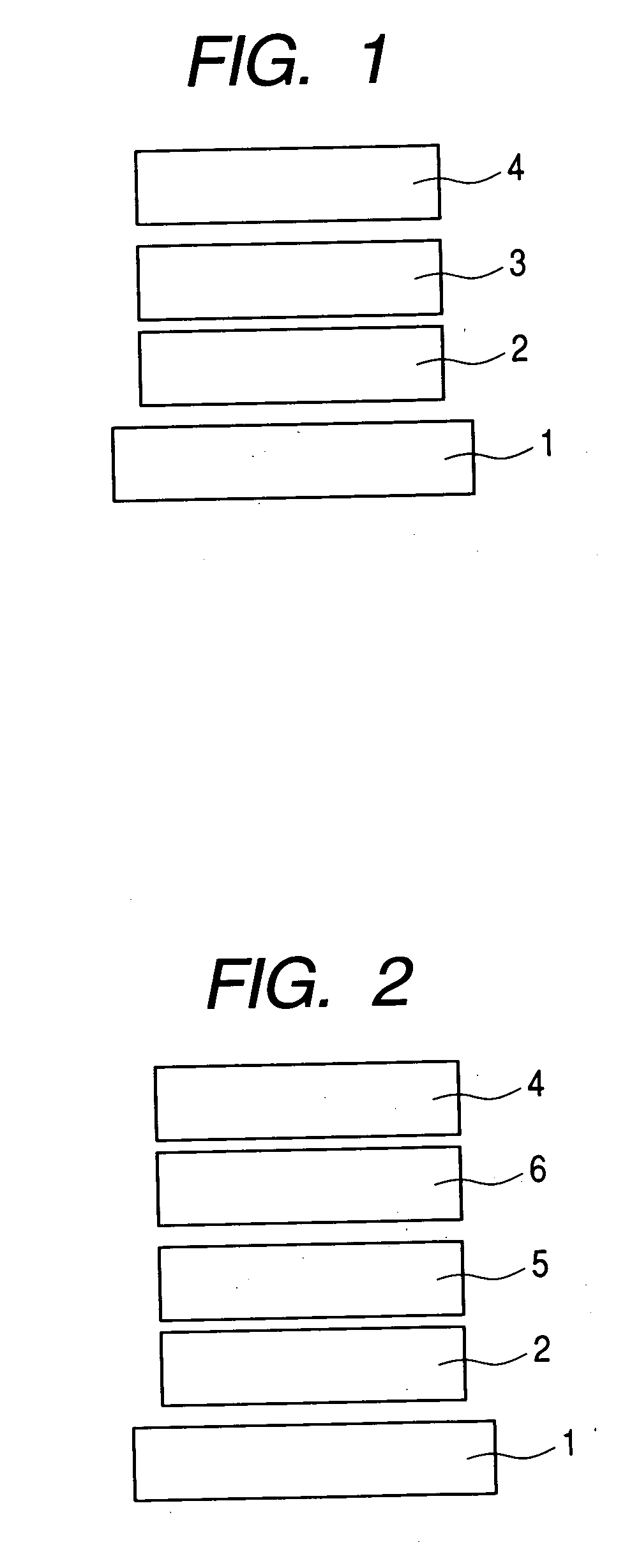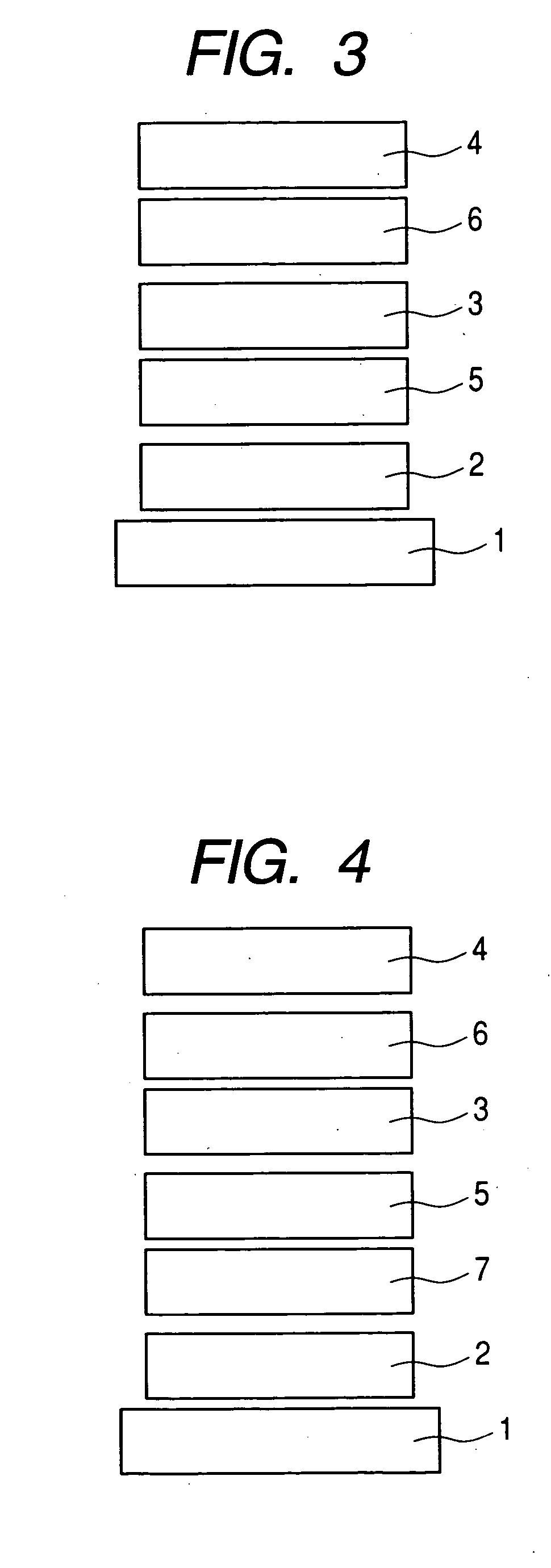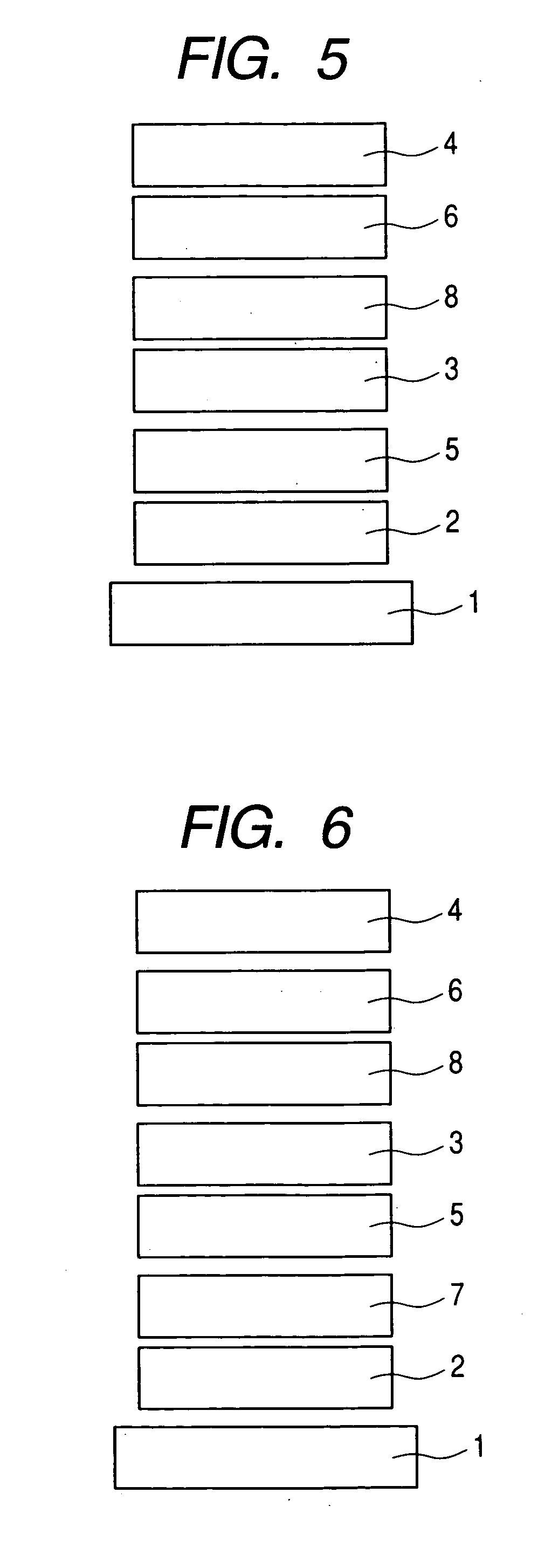Organic compound and organic light-emitting device
a light-emitting device and organic compound technology, applied in the direction of discharge tube luminescnet screen, other domestic articles, natural mineral layered products, etc., can solve the problems of low thermal resistance of phosphorescent compounds, insufficient durability of organic light-emitting devices, and susceptibility to thermal decomposition
- Summary
- Abstract
- Description
- Claims
- Application Information
AI Technical Summary
Benefits of technology
Problems solved by technology
Method used
Image
Examples
synthesis example 1 (
SYNTHESIS OF EXEMPLIFIED COMPOUND NO. 6)
[0066]
[0067] To a solution of 2.0 g (41 mmol) of sodium hydride (50% content) in 30 ml of THF, 6.68 g of carbazole (40 mmol) was gradually added under a nitrogen atmosphere at room temperature. The resulting solution was then stirred for 30 minutes, to thereby prepare a sodium salt of carbazole. This sodium salt of carbazole was added to a solution of 7.32 g (40 mmol) of cyanuric chloride in 50 ml of THF, and the resulting solution was heated to reflux for 5 hours. After the reaction, the reaction solution was added to 500 ml of water. Precipitated yellow crystals (11.5 g) were collected by filtration. These crystals were dissolved by heating with 150 ml of chloroform, and subjected to filtration under heating. The filtrate was cooled to room temperature, and the precipitated white crystals were collected by filtration, to thereby yield 3.3 g (37% yield) of the Example Compound No. 6.
synthesis example 2 (
SYNTHESIS OF EXEMPLIFIED COMPOUND NO. 1)
[0068]
[0069] To a solution of 1.6 g (3.5 mmol) of Exemplified Compound No. 6 in 30 ml of THF, a solution of 0.8 g (3.6 mmol) of 4-iodophenol in 4 ml of 1M sodium hydroxide was gradually added at a room temperature. The resulting solution was then heated to reflux for 8 hours. After the reaction, the reaction solution was added to 200 ml of water. Precipitated white crystals were collected by filtration. These crystals were recrystallized with a chloroform / hexane mixed solvent (1 / 1, V / V), to thereby yield 1.9 g (84% yield) of the Exemplifed Compound No. 1 (white needle-shaped crystals).
synthesis example 3 (
SYNTHESIS OF EXEMPLIFIED COMPOUND NO. 11 AND EXAMPLE COMPOUND NO. 12)
[0070]
[0071] To a solution of 1.0 g (20 mmol) of sodium hydride (50% content) in 30 ml of THF, 3.34 g (20 mmol) of carbazole was gradually added under a nitrogen atmosphere at room temperature. The resulting solution was then stirred for 30 minutes, to thereby prepare a sodium salt of carbazole. This sodium salt of carbazole was added to a solution of 2.96 g (20 mmol) of 3,6-dichloropyridazine in 20 ml of THF, and the resulting solution was stirred for 12 hours. After the reaction, the reaction solution was added to 500 ml of water. Precipitated yellow crystals were collected by filtration. These crystals were dissolved by heating in 50 ml of chloroform, and the resulting solution was cooled to room temperature. Precipitated unreacted carbazole was collected by filtration, and the filtrate was purified by isolating with silica gel chromatography (developed using chloroform / hexane (1 / 1, V / V)), to thereby yield 1.31 ...
PUM
| Property | Measurement | Unit |
|---|---|---|
| temperature | aaaaa | aaaaa |
| temperature | aaaaa | aaaaa |
| thickness | aaaaa | aaaaa |
Abstract
Description
Claims
Application Information
 Login to View More
Login to View More - R&D
- Intellectual Property
- Life Sciences
- Materials
- Tech Scout
- Unparalleled Data Quality
- Higher Quality Content
- 60% Fewer Hallucinations
Browse by: Latest US Patents, China's latest patents, Technical Efficacy Thesaurus, Application Domain, Technology Topic, Popular Technical Reports.
© 2025 PatSnap. All rights reserved.Legal|Privacy policy|Modern Slavery Act Transparency Statement|Sitemap|About US| Contact US: help@patsnap.com



